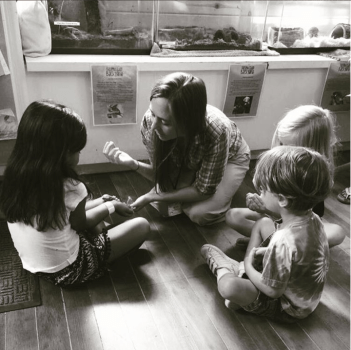As we look forward to National Poetry Month, I thought it would be a nice time to have a poet on the blog. Laura Shovan is a celebrated poet whose debut novel in verse, THE LAST FIFTH GRADE OF EMERSON ELEMENTARY, comes out on April 12th. Read through to the end for an opportunity to win it!

Photo credit: Karen Leigh Studios.
Why is poetry appealing to kids?
Children love the idea that words can create pictures in their minds. I sometimes play a game with them where I say, “An elephant is not standing on your teacher’s desk.” And we all laugh about the elephant who suddenly appeared in our imaginations, in spite of the word “not.” Prose has imagery too, but the white space of poetry allows those images to breathe. The pause we naturally make between one line and the next gives the reader time to absorb the sensory images and ideas, and to make connections.
For kids who haven’t discovered poetry yet, what are some good places to start?
I love Calef Brown’s books for early experiences with poetry. At home, we started with his Polka Bats and Octopus Slacks. The poems are short and funny. They include quirky rhymes and great characters, like Olf the terrible pirate (“terrible” as in really bad at being a pirate) from Brown’s book Dutch Sneakers and Flea Keepers. Nursery rhymes are great, as are tongue twister books such as Charlotte Pomerantz’s The Piggy in the Puddle and Dr. Seuss’s Fox in Socks, which both feature wordplay.
As children move through elementary school, I like poetry books on subjects they are interested in, such as Marilyn Singer’s Echo Echo for fans of Greek mythology, Jeff Moss’s dinosaur book Bone Poems, and Laura Purdie Salas’s A Fuzzy-Fast Blur: Poems about Pets. Sharon Creech’s Love That Dog is a wonderful introduction to novels in verse.
Can you recommend some exercises to get kids writing poetry?
The first thing I recommend is to focus on a single poetry-writing skill in each workshop, at least with elementary schoolers. One of my favorite workshops to begin with is onomatopoeia poems. I ask students to write about a place they know well, or an activity they like to do, using as much onomatopoeia as they can. We make it into a riddle poem. The poet will read his draft out loud to the class and everyone guesses where he is or what he is doing in the poem.
The fun part about this workshop is that, as we move ahead and write other poems, the onomatopoeia words stick. The children naturally incorporate them into their later writing. This and other writing prompts for kids are included in the back of THE LAST FIFTH GRADE OF EMERSON ELEMENTARY.
Can you share any stories about your work with kids and poetry?
I hope you don’t mind a sad story.
I was doing a fourth grade poetry residency one winter. There was a boy in the class whose mother had died. He hadn’t been participating much, but sat with an aide in the back of the room. Then one day, he wrote a poem wishing his mother could come down from heaven and scold him for not doing his chores. All of the adults started tearing up. I found out later, it was the first time he had talked about his mother’s death at school.
There is something about making space in the school day, or at home, for writing poetry, that allows young people to open up. I think it’s because the writing task is different from the usual school assignments, which focus on analysis, persuasion, and earning a grade. When we ask children and teens to write about their experiences, the things they feel deeply about, we’re letting them know that they are valued not only as students, but as full human beings. That’s a powerful thing!

Laura Shovan’s engaging novel, THE LAST FIFTH GRADE OF EMERSON ELEMENTARY, is a time capsule of one class’s poems during a transformative school year. The students grow up and move on in this big-hearted debut about finding your voice and making sure others hear it. To win a copy of this lovely story, leave a comment below by midnight EDT on Friday. For two entries, tweet about this giveaway! (Please make sure your email address and twitter profile are included in your comment.)
Laura Shovan is former editor for Little Patuxent Review and editor of two poetry anthologies. Her chapbook, Mountain, Log, Salt and Stone, won the inaugural Harriss Poetry Prize. Laura works with children as a poet-in-the-schools and is currently serving as the Howard County Poetry and Literature Society’s Writer-in-Residence. The Last Fifth Grade of Emerson Elementary, her novel-in-verse for children, will be published in April 12 (Wendy Lamb Books/Random House).
Katharine Manning is a middle grade writer who has loved poetry since a teacher handed her Gwendolyn Brooks’s We Real Cool in fourth grade. You can read her middle grade book reviews, including of THE LAST FIFTH GRADE OF EMERSON ELEMENTARY, at Kid Book List. You can also find her at www.katharinemanning.com and @SuperKate.









